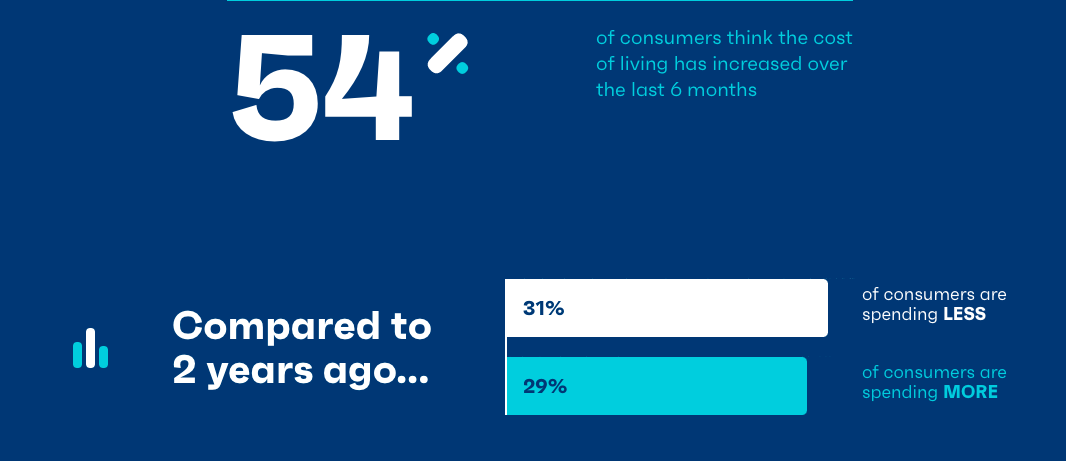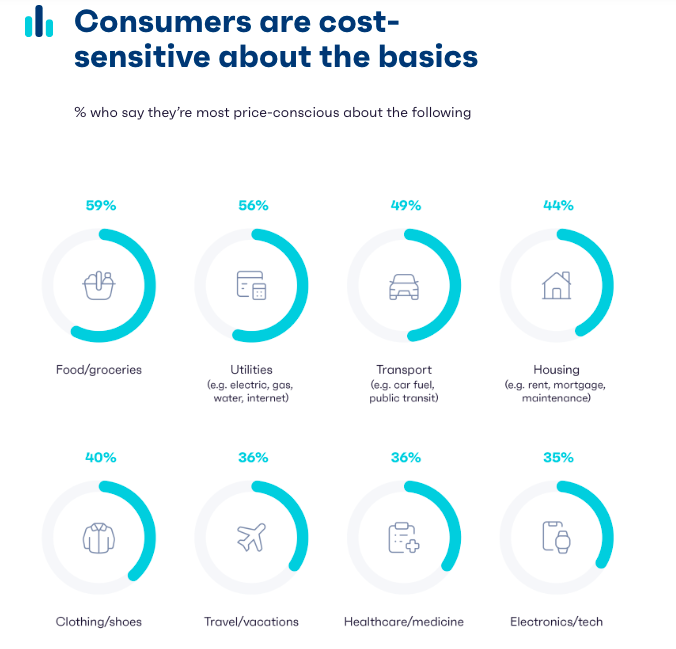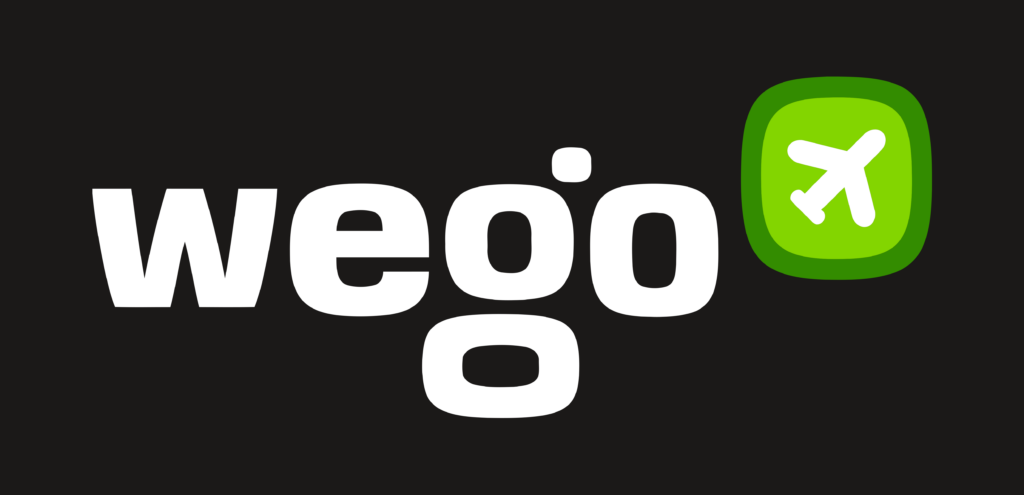Fears about the future of national economies are up for the first time since Q2 2020 when we felt the initial impact of Covid lockdowns.
Personal finance concerns are also rising, with the biggest increases in Hong Kong, Israel, Japan, Sweden, and New Zealand. Of all markets tracked in our Zeitgeist data, UK consumers are the most likely (44%) to say they’re spending less compared to two years ago.
In the US, there’s a stark reverse trend to the carefree spending we saw back in November’s Connecting the dots report. Thriftiness is back in, while optimism, rebelliousness, and daringness are all down.
But not everyone is feeling the pinch. In fact, some consumers are unlikely to experience this financial dilemma at all, and may well spend more.

Price-conscious or eco-conscious?
50% of consumers say they plan to be more energy-efficient. If inflation wasn’t enough to contend with, fuel and energy shortages are wreaking havoc with consumer finances. This may explain the recent rise in eco-friendly intentions. 44% of consumers plan to walk or cycle more, and 38% plan to reuse more products. But just 10% plan on buying secondhand clothes. It’s more likely this shift is driven by the need to conserve cash, rather than the desire to save the planet, but it’s driving more sustainable changes nonetheless.
According to the report's findings, consumers are most concerned about the cost of food, utilities, and transport. This comes as no surprise, with rising fuel and energy prices chipping away at income. However, fewer consumers think they’ll spend less on groceries. Instead, they’re cutting back on certain treat purchases like alcohol, nights out, and vacations – so retail, travel, and hospitality businesses may feel the impact.

Which purchases are on the chopping block?

The luxury commodities people consider worth their hard-earned cash may indicate a post-Covid transitional period, as those who can afford to are treating themselves and spending less time at home. While consumers say they’re spending less on vacations, it’s clear they’re not ready to give them up entirely.
This desire to get out of the house and make up for lost time also aligns with the decline in purchases of home goods and furniture, suggesting the home refurbishment trend we saw during lockdown has come to a halt.
Health or wealth?
Today’s consumers are more likely to report feeling unwell. The physical and mental health prioritization seen during Covid lockdowns has encouraged more of us to be open and honest about feeling sick or having an ‘off’ day. Compared to the last 2 years, 70% of consumers agree mental health awareness has become more important to them, and 52% are exercising more.
Low-cost or high-value?
While consumers are price-conscious, our Core Plus data reveals another side of the story. Whether achieved through brand marketing, or word-of-mouth reviews from friends and family, the perception of cost-effectiveness can be just as important for brands as price.
People want to buy from brands they believe offer longevity and value for money, meaning brand names don’t matter as much, and consumers are willing to switch to alternatives that offer greater perceived value – even if they aren't actually any cheaper.
This may explain why more people are flocking to discount stores to buy ‘basic’ household goods over premium range products. Switching to cheaper broadband deals is also on the up, with sweeteners like freebies and flexible contracts luring consumers in.
This article is a summary of a report published by GWI. The entire report can be accessed here.






